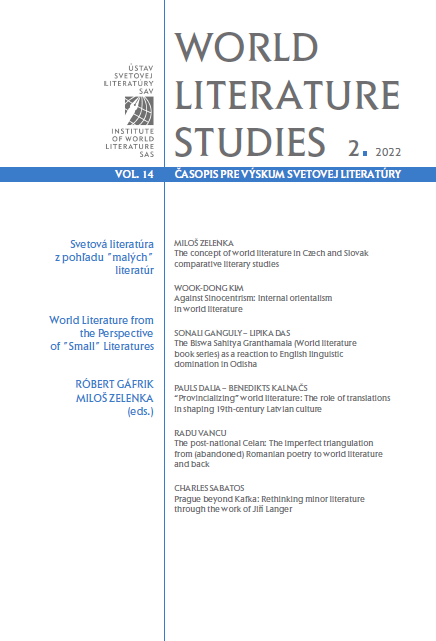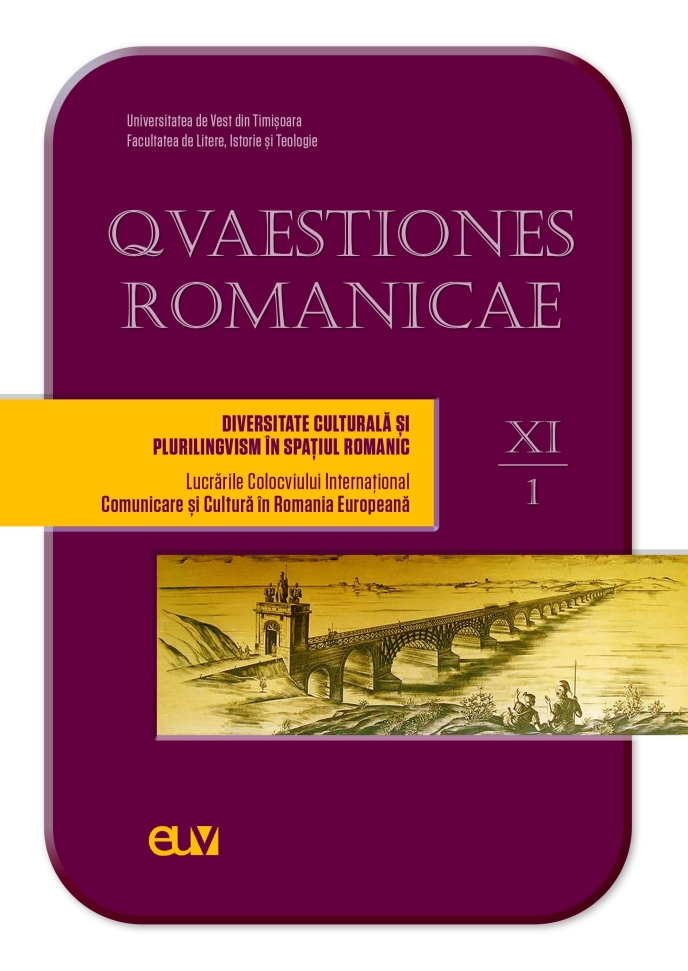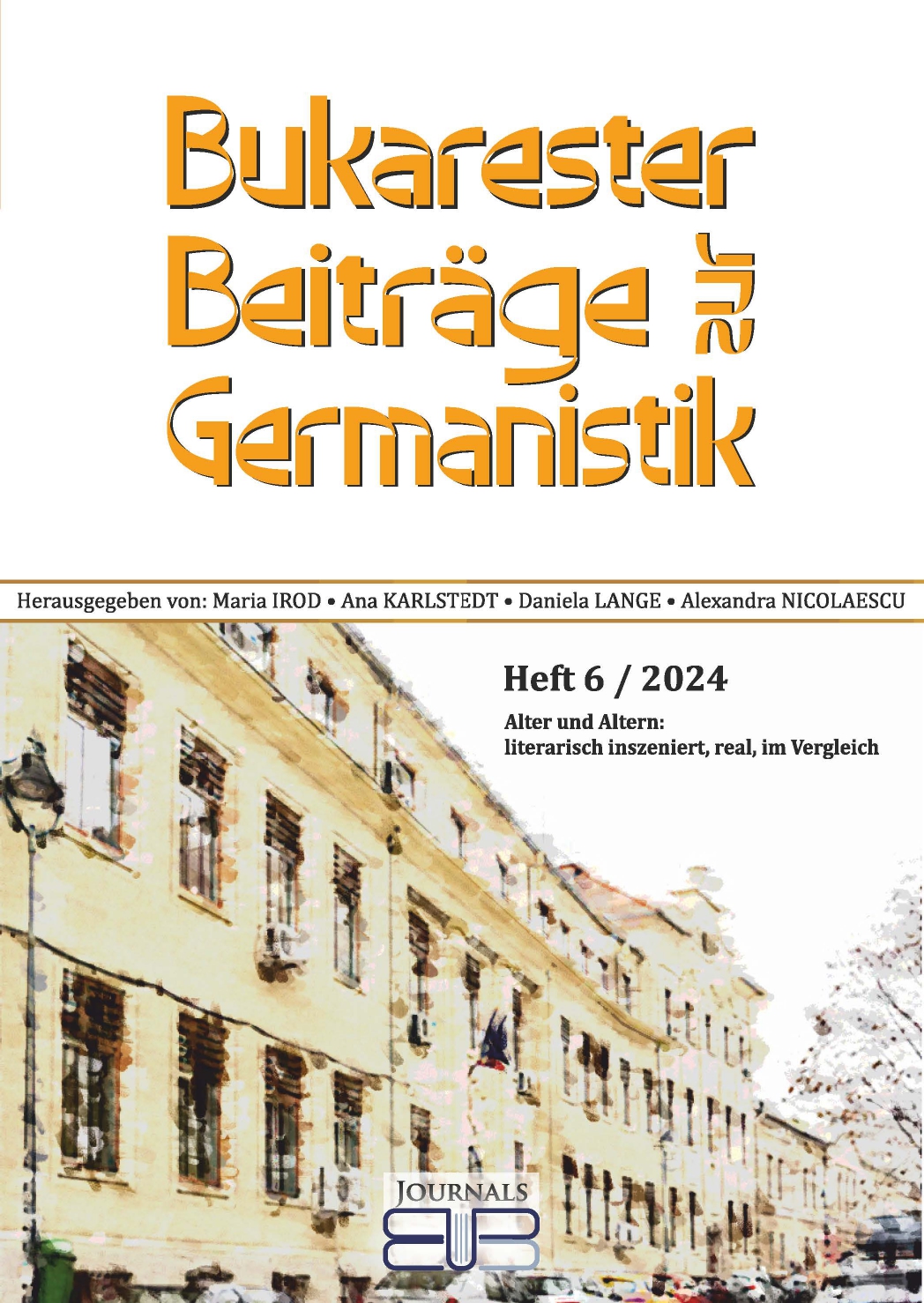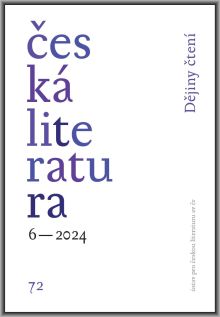![Katarína Bešková: Súčasná egyptská literatúra: Dystópia, cenzúra a Arabská jar [Contemporary Egyptian Literature: Dystopia, Censorship and the Arab Spring]](/api/image/getissuecoverimage?id=picture_2021_61494.jpg)
We kindly inform you that, as long as the subject affiliation of our 300.000+ articles is in progress, you might get unsufficient or no results on your third level or second level search. In this case, please broaden your search criteria.
![Katarína Bešková: Súčasná egyptská literatúra: Dystópia, cenzúra a Arabská jar [Contemporary Egyptian Literature: Dystopia, Censorship and the Arab Spring]](/api/image/getissuecoverimage?id=picture_2021_61494.jpg)


The concept of world literature is traditionally applied to the process in which literary texts cross national borders in the process of translation, thus getting a desired added value to be recognized on a larger scale. While fully admitting the importance of translations from small literatures to the languages of more widespread communication, our aim in this article is to demonstrate that broad circulation of translated texts in smaller languages create fascinating patterns due to their specific interpretation in local contexts that expand reception perspectives and change the terms of interpretation of world literature. The complexity of these moves is traceable through the process in which translations of popular culture are integrated into 19th-century Latvian literary activities alongside recognized classics, explicitly setting an aim of fostering the creation of a national canon. On the other hand, elite works of European literature are “provincialized” in the process of domesticating them alongside other texts of lower literary quality. The translations from both elite and popular culture thus contribute to the rise of Latvian letters, expanding the limits of the potentially influential corpus of texts that can cross the borders of one national literature. With the use of specific examples, we follow the interplay of popular and elite translations that gradually transform 19th-century Latvian literature and create a comprehensive literary system representative of a small culture.
More...
This article focuses on the (dis)continuities between the German-language work of Paul Celan (integrated into a “large” literature where he becomes “Europe’s foremost poet after World War II”, in George Steiner’s opinion) and the scanty corpus of Romanian literature written by Celan in his Bucharest period, read in the post-national perspective. In his book Comparing the Literatures: Literary Studies in a Global Age (2020), David Damrosch states that a unified Romanian literature should integrate literature written in several languages, disregarding the obsolete criterion of the national language. While agreeing with this proposition, the article remarks that Damrosch’s other theoretical proposition, that of the bifocal viewpoint, with the two foci represented by the literature of origin and that of insertion, proves ineffective in Celan’s case. The author proposes the use of “cultural triangulation”, Andrei Terian’s concept, for a better understanding of Celan as a post-national poet. In this model, Celan proves to be not a single poet but rather a network comprising all his possibilities of development in any language, intersecting possible (but abandoned) and accomplished versions of himself, writing in two languages (even not proportionately so), and absorbing and distributing biographical and cultural information from and to each of them.
More...
Taking Gilles Deleuze and Félix Guattari’s theory of minor literature as a starting point, this article moves from their opposition of “major/minor” literatures to their “tetralinguistic” model of vernacular, vehicular, referential, and mythic language. It presents the work of the polyglot poet and Hasidic scholar Jiří Langer to offer a multifaceted view of three distinct contexts: the theoretical discourse of minor literature, the literary milieu of interwar Prague, and the history of gay Czech and Jewish writing. Langer appears in Franz Kafka ’s diaries and letters over a period of several years as a source of information on Jewish culture, as well as a personal contact to prominent rabbis from the east. Two decades later, Langer produced his own remarkable work in Czech, Devĕt bran (Nine Gates, 1937), a popular-scholarly study of Hasidic traditions based on his experience in the Galician town of Belz. Much of what is known today about Jiří Langer’s unconventional life comes from the memoirs of his brother František, published as a foreword for the English translation of the book. However, it was only in recent years that Langer’s Hebrew poetry has also become available to English-speaking readers, revealing his linguistic strategies that draw on mystical traditions in the attempt to form a modern synthesis of Jewish homosexual identity. Jiří Langer’s literary activity shows Prague as a site of self-definition through multilingualism, rather than the more familiar image of Kafka ’s “deterritorialization”.
More...![Arie van der Ent (ed.): Vermoorde dichters almanak: Onvrijwillig gestorven 1919–1944 [Murdered poets’ almanac: Involuntary death 1919–1944]](/api/image/getissuecoverimage?id=picture_2022_68248.png)
![CAROLA HEINRICH: Was bleibt? Zur Inszenierung von Gedächtnis und Identität im postsowjetischen Kuba und Rumänien [What remains? On the staging of memory and identity in post-Soviet Cuba and Romania]](/api/image/getissuecoverimage?id=picture_2022_68248.png)
![PETER ZAJAC (ed.): Poetika festivity [The poetics of festivity]](/api/image/getissuecoverimage?id=picture_2022_68248.png)
![JANA KUZMÍKOVÁ: Kognitívna literárna veda. Teória, experimenty, analýzy [Cognitive literary studies: Theory, experiments, analyses]](/api/image/getissuecoverimage?id=picture_2022_68248.png)
![Jitka Zehnalová: Aspekty literárního překladu. Mediační úloha překladatele [Aspects of literary translation. The mediating role of the translator]](/api/image/getissuecoverimage?id=picture_2022_68248.png)

The aim of the present paper is to come to terms with the poetry written by two young Romanian writers, Anastasia Gavrilovici and Daniela Hendea. Basically, it follows a twofold outline: 1. the emergence of plurilingualism and the relation between language and posthuman ethics; 2. the notable poetic features and the force lines that individualize the two poetesses mentioned above. On the one hand, the poems written by Anastasia Gavrilovici explore the hybridization that starts within the body and ends in an integrative conscience, that does not belong to that body anymore. On the other hand, in the poems published by Daniela Hendea, the poetic voice impels the cultural dynamics, questioning not only a literary tradition, but also the profound layers of the individual and social existence.
More...
The concepts of time and time perception are crucial in this article. Moreover, the fact that time is perceived differently from children to adults is exemplified through theory and practice. The main object of analysis is the cult classic fantasy novel ''Momo'' by Michael Ende. Published in 1973, the book emphasizes the fact that children and adults have different visions and different usage of time. While children seem to have time in abundance, focusing on play and fun ways to spend it, adults fear they don’t have enough time on their hands. Michael Ende proposes a possible worlds dystopic scenario in which relentless and cunning so-called time-thieves have power over human time. It is only little Momo with her unique, effortless approach to temporality that can save humankind from extinction. Counting on his readership being entertained by his book, Michael Ende’s novel also has the power to make us highly aware of the consequences of poor time management. For this reason, the following article also ponders over the moralizing aspects of this timeless novel.
More...
The study deals with the first sections of Ulrich von Liechtenstein’s ''Frauendienst''. These parts (introduction and youth history) belong essentially to the whole work in the sense that they not only prepare later events in a narrative manner, but also determine some basic rules for the whole work. Numerous details (expressions, scenes, situations) indicate that the prologue and youth history announce consequently the most important characteristics of the Frauendienst (e.g. appreciation of women, service for them, sincerity and last but not least role of the poetic activity). Together they create an extensive metonymy that acts as motto and initiates audience into the universe of the work.
More...
The present article examines the use of children’s perspective in contemporary family narratives written in German by transcultural authors. The analysis includes works of Irena Brežná, Ilinca Florian and Julya Rabinowich, who deal with the issue of crossing borders from the east into the west. For this purpose, the children’s perspectives are construed as representations. Proceeding from the different possibilities and functions of these representations, the questions of the first-person narrator as well as the integration into the family context will be analyzed. This shall expose that the child standpoints reveal the tensions between the different perspectives. This occurs by means of the precise, sensory-oriented, “childlike” perception and the latent testimony of the adults, thus creating a field of heterogeneous impressions. Finally, discussing Wolfgang Welsch’s concept of ethic/aesthetics, it shall be discussed to which extent the presented narrative perspective from a child’s point of view is one of several often-used transcultural narrative techniques.
More...
Review of: Jack, Belinda Elizabeth. Reading: a very short introduction. First published. Oxford, United Kingdom: Oxford University Press, 2019. 136 pages. Very short introductions; 600. ISBN 978-0-19-882058-1.
More...
Review of: Martin Kasarda: Kniha. Najvätší vynález ľudstva. Ako úspešne vyrobiť a umiestni knihu na trhu. Bratislava, Grada 2023. 285 pages.
More...
Reviews of: 1. Tamás Berkes: A cseh reformkor: A nemzeti újjászületés irodalmi alakváltozatai. Opera Slavica Budapestinensia Litteræ Slavicæ. Budapest, ELTE BTK Szláv és Balti Filológiai Intézet 2022. 172 pages. 2. Tamás Berkes: A cseh irodalmi modernség. Budapest, ELTE Eötvös Kiadó 2023. 142 pages.
More...
The groundbreaking “play-poem” "The Waves" has attracted much critical acclaim due to the innovativeness of the form. While endorsing the claims on Woolf’s experimentation, the present article suggests that ancient traditions and modes are discernible within the innovative narration of grief. The thematic scope involving the death of the major character, Percival, is argued to be a major reason for prioritising the fifth section of "The Waves" as the midpoint, and indeed the central point, of the narration. The formula of mourning contained in this section is investigated alongside the ekphrastic set-piece description of noon preceding it. Subsequently, the elegiac lament over Percival found in Section V is examined, with the analysis based on the references to tragic or pastoral traditions known and deployed in European literature since antiquity. This particular fragment of "The Waves" is argued to constitute a modernist version of prose elegy, being a literary rendition of a polyphonic lament in which each subsequent part differs in terms of mode and rhetoric. The paper examines how much the form and the premise of the elegiac triad of lamentation– confrontation–consolation predetermine the choice of the elegiac speakers: Neville – the pastoral, elegiac mourner; Bernard – the eulogist and chief representative of the community; and Rhoda – a performer of the rites of leave-taking.narration's midpoint, and indeed the central point
More...
The article offers a comparative analysis of two of Charles Dickens’s Christmas Books: "The Chimes" (1844) and "The Cricket on the Hearth" (1845). Time influences literary fashions, which prompted me to conduct an analysis of these translations. Polish translations of the books were published at different times, encompassing the nineteenth, twentieth, and twenty-first centuries, which had a considerable impact on their poetics and quality. This paper aims to present various approaches to the linguistic representation of emotions in source texts and target texts. The study relies on structural analysis and cognitive linguistics, which includes spoken and written language, as well as non-verbal communication. It opens with a short introduction on the issue of emotions and how they can be examined. It also explores how languages manifest expressions of emotions and translators’ techniques to cover expressiveness. Special attention was given to various ways of depicting emotions in the texts, paying attention to the use of diminutives, metaphors, and phraseological units involving body organs (one of them being the “heart”) or symptoms of emotions. Triggered by interest in emotions in recent years, researchers have started to take them into account in research. Consequently, I claim that among the numerous linguistic works devoted to feelings and emotions, it is not easy to distinguish those whose corpus is a novel or literary fiction, especially from a comparative perspective in the retranslation. This article is part of the current research on the linguistic approaches to naming, communicating, and expressing emotions in literary texts compared to their translations as well as translators’ choices and their techniques. Hence, another notion that will be useful in the analysis is that of “retranslation”. However, although the issue of emotions has been tackled by many scholars, it seems still under-researched and it certainly seems possible to shed new light on how translators work and what drives their translation decisions. Thus, in the conclusions, I attempt to portray various ways of expressing emotion, as exemplified in "The Chimes" and "The Cricket on the Hearth" and their Polish renditions.
More...
Poems of Yuliia Ozen. Yuliia Ozen is a Ukrainian poet, known for her contributions to contemporary literature, including poetry and prose. Her debut poetry collection was published in 1994, thanks to the support of notable Ukrainian poet Ihor Kalynets. The collection, initially intended to be titled The Thirty-Third Figure based on a chess cycle, eventually took the title Playing the Queen under the guidance of another poet, Viktor Neborak. Her writing often explores themes of identity and emotional complexity, and she is recognized for her deep intellectual approach to poetry, blending personal experiences with wider philosophical themes. She also engages in reflections on war, as seen in her post-2022 works that speak poignantly to the ongoing conflict in Ukraine. Her prose and poetry reflect the psychological impact of the war, with personal accounts of her experiences and the emotional and physical tolls of the war on individuals.
More...